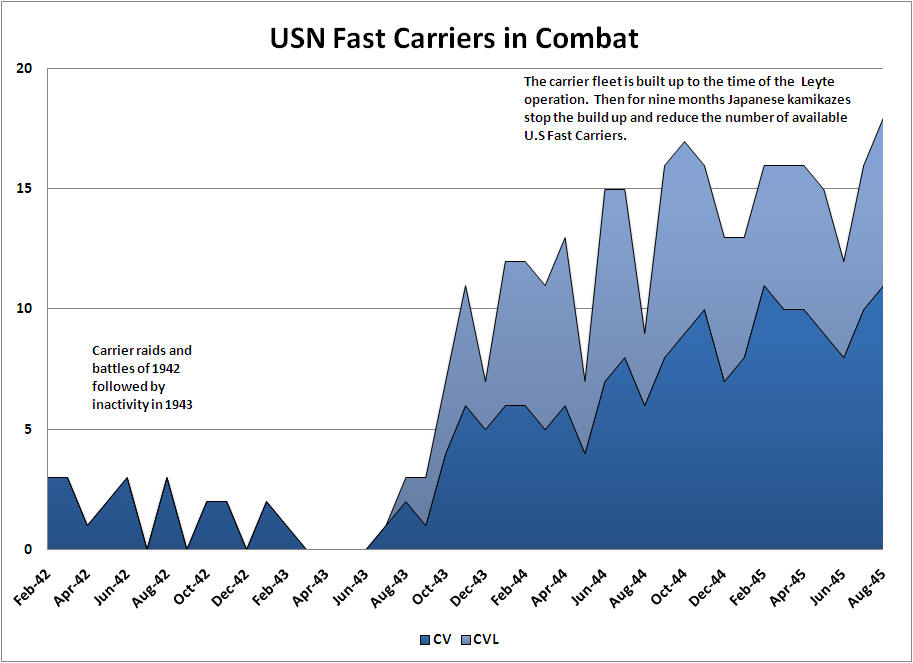In April 1941 the Imperial Japanese Navy
formed the First Air Fleet, composed of all
By the time of
The

One of the causes of the war was the
Each fast carrier was assigned an air group
of two to four squadrons.
Heavy carriers accommodated approximately 100 aircraft while
light carriers accommodated approximately 33.
After the navy’s TBD squadrons were decimated at Midway the
TBF/TBM Avenger became the standard torpedo bomber on
The SBD was the standard dive bomber for the
first half of the war and was replaced by the SB2C in 1944.
In 1943 a heavy group had 36 SBD and a light carrier group
had 9 SBD. As fighters
became more capable and the kamikaze threat emerged fighters were
substituted for dive bombers so that by the end of the war the
standard bomber complement of a heavy group was 15 SB2C and 15 TBM.
The F4F was the standard carrier fighter in
1942. It was replaced
by the F6F in 1943 which in turn was supplemented by the F4U in
1945. The number of
fighters on heavy carriers grew from 18 at the beginning of 1942 to
73 in 1945. The fighter
complement on light carriers grew from 12 in 1943 to 24 in 1945.
For Olympic, heavy carrier fighter complements were to be
reduced to 56 and light carrier groups would contain only fighters.
The planned light carrier complement initially was three
dozen F6Fs or F4Us with the ultimate goal of four dozen of the
smaller F8Fs. F8F
equipped air groups were in the pipeline to the Western Pacific as
the war ended.
Initially carrier air groups were assigned
permanently to carriers and squadrons were rotated through the
groups as circumstances warranted.
At time progressed the navy found it more effective to manage
groups than squadrons and groups were assigned to carriers for
specific tours of duty.
As the war progressed the intensity of operations increased the tour
lengths were shortened.
For all of 1944 and 1945 aircraft attrition on the active carriers
was more than 20% per month.
By May 1945 nine heavy carrier air groups were in action and thirty five additional heavy carrier groups were at various stages of training. This total was approximately two air groups for each heavy carrier that was in commission or was planned to be commissioned by the end of the training cycle.[2]
[1] This idea is more fully developed by Anthony Tully on the Nihon Kaigun web site. http://www.combinedfleet.com/cvlist.htm
[2] In May 1945 nine
heavy carriers were on the front line, one was training near
Pearl Harbor, two carriers were under
routine repair, four carriers were under repair for battle
damage, two were training in the Atlantic and five
additional heavy
carriers had been launched.
Included in the air group total are the two air
groups that would have come out to the Pacific with the
USN’s new very large carriers Midway and